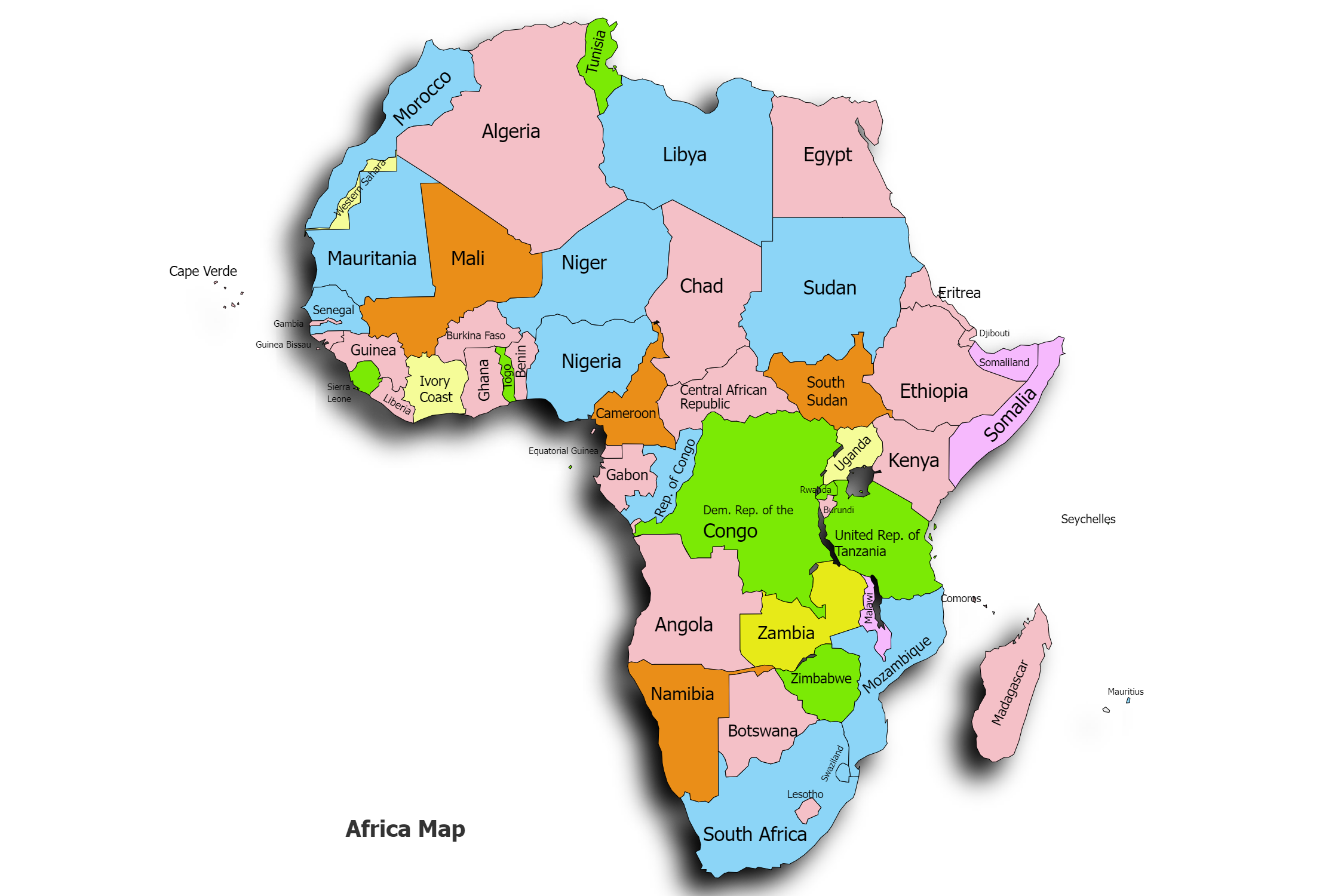African Continent
A brief about african continent

About Africa
After Asia, Africa is the second biggest continent on Earth, both in size and the number of people living there. Africa covers approximately 30.37 million square kilometers which is about 20% of the world's total land area and approximately 6% of the Earth's surface. The population of Africa is approximately 1.3 billion people, which is about 16% of the world's total population.
Countries and Land Area
It's full of different countries, cultures, and languages. There are 54 countries in Africa. Mainland Africa is shared by 48 countries, with an additional six island nations considered part of the continent. The largest country in Africa is Algeria, which is located in the northern part of the continent. It covers an area of about 2.38 million square kilometers. The smallest country in Africa is Seychelles, an island nation located in the Indian Ocean. It consists of about 115 islands and has a total land area of just 459 square kilometers. It's mostly separated from other land areas, except for a small bridge connection in the northeast that links it to Western Asia.
Regions
There are five main geographical regions or subregions in Africa.
- North Africa
- West Africa
- Central Africa
- East Africa
- Southern Africa
Languages
In Africa, people speak more than 2,000 different languages! These languages come from various language families. Some of the most common ones are Arabic, Swahili, Hausa, Yoruba, Amharic, and Igbo.
History and culture
Africa has a long history. Ancient places like Egypt and Ethiopia are there. These ancient structures are iconic symbols of Egypt and attract millions of visitors each year.They have rich cultures and traditions. Nigeria and South Africa also have lively cultures. The Nile River, which is the longest river in the world, has been a lifeline for ancient african civilizations such as the Egyptian, Nubian, and Kushite civilizations.
Landscapes
Africa has many different landscapes. In the north, there's the huge Sahara Desert. In the middle, there are thick rainforests. And in places like the Serengeti, there are wide open grasslands. Lots of animals live in Africa, like lions, elephants, and giraffes. There are also amazing natural sights to see.
Safari
Embarking on a safari in the African continent promises an unforgettable adventure filled with breathtaking wildlife. Serengeti National Park in Tanzania, Maasai Mara National Reserve in Kenya, Kruger National Park in South Africa, South Luangwa National Park in Zambia, Mana Pools National Park in Zimbabwe and Bwindi Impenetrable National Park in Uganda are some of popular Safari’s in africa.
- Read More:
- About Africa |
- Facts